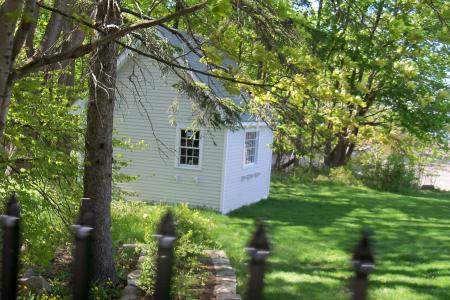Virginia Woolf, Roald Dahl and George Bernard Shaw might all be well-known writers but there’s another link that binds them together – they all enjoyed the perks of a well-kept garden shed.
 Woolf would spend her summers writing in her shed, Dahl’s den was adorned with a climbing rose and Shaw filled his with a bed and telephone, and sat atop a turntable so he could follow the sun.
Woolf would spend her summers writing in her shed, Dahl’s den was adorned with a climbing rose and Shaw filled his with a bed and telephone, and sat atop a turntable so he could follow the sun.
But while writers are well known for their chic sheds, for most people, a shed is often an unkempt home for the lawnmower, strimmer and unwanted plant pots.
At a basic level, a garden shed simply adds storage space to a property but with a bit of imagination, it can become a miniature home from home – and the perfect place to entertain guests during the balmy summer months.
Here, Tracey Hartwell, head of sales at Shedstore.co.uk, offers some advice to those thinking of sprucing up their shed.
Do I need planning permission?
Even to use a shed as more than just a storage cupboard, planning permission is not needed, provided that it’s for domestic use, it’s not more than three metres tall for a flat roofed shed, or four metres for a ridged roof and it doesn’t cover more than half the garden. There are additional rules for those living in World Heritage Sites, National Parks or areas of outstanding natural beauty.
How can I power it?
Those up for digging a trench in their garden can run electrical wires underground from the main house to equip their shed with mains power. If you just want basic lighting, for example, the job is more straightforward than if you’re planning to use a desktop computer, a lawnmover, or an electric stove that will require RCD protection for your safety.
Electric convection heaters are a popular way to provide heat as they can be controlled with a 24-hour timer and a thermostat, and are relatively cheap to install, either mounted on a wall or free standing.
Alternatively, solar powered products can store excess power, from basic lighting kits to more sophisticated solar power stations of varying capacity. These are DIY self-install product saving time, and the need to dig a ditch.
Will my designed shed add value to a property?
If you do add a shed to your garden, do it for your own enjoyment, not to add value to your home.
A buyer may see a luxurious, high spec log cabin or summer house as additional floor space, so it’s conceivable that an asking price may factor this in, but it’s certainly not going to add huge sums.
That said, a beautiful, cared-for shed is certainly not going to put many buyers off and, it could conceivably help sway someone torn between two properties.

